#fashionwithpurpose
Text




Turquoise Ring Women, 925 Silver Turquoise Ring, Stone Ring, Oval Turquoise Gemstone Ring, 925 Silver Turquoise Ring
#turquoise jewelry#925 Silver Ring#handmade gifts#gemstone rings#Oval Turquoise#Inspirational Jewelry#Uplifting Gift#Positive Vibes#handcrafted jewelry#Artisan Ring#giftsforher#Empowerment Jewelry#boho style#healing crystals#silver jewelry#Mindful Living#spiritual jewelry#unique gifts#fashionwithpurpose#jewelryinspiration#handmade jewelry#artisan jewelry#handmade ring#solid silver jewelry#handmade#fashion#vintage jewelry#gift for her#jewellery
3 notes
·
View notes
Photo

Fashion meets sustainability! Explore our eco-conscious collection, where style meets responsibility. Discover trendy, comfortable clothing that's kind to the planet. 🌿💚🌎👕 #SustainableFashion #EcoFriendlyStyle #FashionWithPurpose http://www.TheTShirtLady.com/eco
0 notes
Text
// Week 6: Slow Fashion //
Weaving Threads of Change: Embracing Slow Fashion in a Digital World"
🌿 Welcome to the world of fashion, where creativity meets conscience, and sustainability intertwines with style. 🌟 Amidst the vibrant tapestry of the fashion industry, a refreshing breeze of change whispers through the threads of tradition. Enter the realm of slow fashion—a beacon of hope illuminating a path towards a more sustainable and socially responsible future. 💫 While traditional avenues have often sought solutions from global fashion giants, a new narrative emerges—one that resonates with the evolving needs of both present and future generations. Join me on this journey as we explore the beauty of slow fashion and its profound impact on our world. 🌍💚
Understanding Human Needs in the Fashion Context
Consumption and usage of material things, especially clothing, are associated with people's efforts to fulfil their basic human needs. Emotionally rich and healthy lifestyles can be achieved when these demands are met (Max-Neef, Elizalde & Hopenhayn 1991). The most thorough theory of human needs classification is that put out by Chilean economist Manfred Max-Neef. His theory takes into account nine requirements, which are structured in a non-hierarchical fashion (refer to Table 1.1). No matter your society, religion, or era, these are constant. There are various methods by which people might fulfil their wants. "Satisfiers" is what Max-Neef deems these. There is a correlation between the little material input required to meet the demands of sustenance and protection and the role that fashion might play in this regard. Additionally, it fulfils the demands of belonging, expression, and involvement, all of which, in theory, may be better met through cultural, social, and individual forms of engagement than through materialistic pursuits like clothing and accessories (Jackson & Marks 1999).

Unpacking the ‘Fast Fashion’ Model
Fashion is acknowledged as one of the most polluting sectors throughout its entire life cycle, despite its popularity as a means of self-expression and creative expression (Caniato et al. 2012). It is worthwhile to explore the industry's most popular business model, "fast fashion," which aims to maximise earnings for a small number of globalised megabrands by speeding up the consumption of apparel led by trends. Fast fashion has both good and negative aspects. On the one hand, it makes the newest runway trends accessible to low-income families and young adults at cheap costs, which can improve their sense of belonging and overall well-being (Cataldi, Dickson & Grover 2017).
The appeal of fast fashion is that it caters to a wider audience by making the newest trends accessible at affordable prices. Nevertheless, ethical and environmental concessions are frequently made to attain this affordability (Niinimäki & Hassi 2011). Systemic problems are being brought to light by reports of child labour in Uzbekistan and Burkina Faso's cotton fields, as well as by the extremely low salaries and unpaid overtime in thousands of developing nations' industries (Turker & Altuntas 2014). Additionally, fast fashion contributes to environmental degradation and worsens social inequality by perpetuating overconsumption. One of the most blatant ways people in today's culture show their social standing, morals, and group identification is through fashion choices. Fast fashion has become the norm due to the effect of contemporary norms and practices on customers (Blazquez et al. 2019). To close the value-action gap, it is necessary to find ways to make people buy clothes that are less harmful to the environment (Jacobs et al. 2018).
A more fair and environmentally conscious fashion industry can be built by tackling these structural problems and advocating for sustainable alternatives.

Transitioning to slow fashion?
The ultimate aim of bridging the fashion value-action divide is for people to completely embrace a "slow fashion" choice. It is suggested by Ertekin and Atik (2015) that the phrase "slow fashion" covers all forms of sustainable apparel, including eco-friendly, green, and ethical options. A strong, broadly recognised fashion model can emerge from slow fashion if it adopts a strategic, systems-thinking stance.
In the context of the fashion sector, the sufficiency framework takes the form of the slow fashion model, which aims to reduce resource use, increase product lifespans, and avoid excessive consumption (Vesterinen and Syrjälä, 2022). The core principles of slow fashion include prioritising quality over quantity in all aspects of the industry, from design to manufacture to consumption to better living conditions for all (Fletcher, 2010). To achieve this goal, one must adhere to several practices, such as creating items with a long lifespan in mind, purchasing less, properly caring for clothing, buying locally, and being a part of a community of like-minded individuals (Legere and Kang, 2020).
Jung and Jin (2014) build on Fletcher's work by outlining the 'five dimensions' of slow fashion values: functionality, exclusivity, authenticity, equity, and localism. According to Jung and Jin (2014) and Legere and Kang (2020), there are several concepts in the fashion industry that consumers should be aware of. "Equity" refers to the importance of fair labour practices in the development of textiles and garments. "Localism" emphasises the positive economic impact of buying locally produced goods. "Authenticity" emphasises the importance of well-made and artisanal textiles and garments. "Exclusivity" describes the social identity and value associated with premium products. "Functionality" refers to the value of a product's adaptability, durability, and use.

The social impact of the slow fashion sector is contingent upon the players' ability to work together. The 'equity' and 'localism' principles of transparency and cooperation among local players are upheld by a 'neighbourhood system' (Ertekin & Atik, 2015) that includes designers, buyers, and supply chains. Stürmer et al. (2003) found that fostering connectedness among players helped establish slow fashion as a movement and sustainable fashion model. This was achieved by creating a shared identity among stakeholders, which mobilised a wide market and social change. By coming together under a common banner, we can stand up to "mainstream marketers" and stand in solidarity with slow fashion's guiding values (Ertekin & Atik 2015). Second, the concepts and practices of slow fashion can become more mainstream if they harmonise with preexisting institutional processes. The slow fashion trend could be institutionalised through three means (Scaraboto & Fischer 2013). Firstly, slow fashion goods can be aligned with popularly valued aesthetics by responding to the institutional logic of aesthetics, which can broaden their appeal. Second, promoting institutional innovations brings widely-supported technology advancements like fibre renewal and responsible manufacturing into slow fashion practices. Thirdly, popular brands and shops can help spread the word about slow fashion principles by teaming up with influential institutional players (Ertekin & Atik 2015).
Slow fashion has its roots in social and institutional factors, yet customers are still vital to the industry's success. Knowing who buys what in the fashion sector is essential since shifts in customer behaviour can cause widespread changes in a short amount of time (Clark, 2008; Gupta et al., 2019). Policymakers can better support sustainable choices by gaining a grasp of the various cultural and ideological perspectives people bring to the fashion industry.
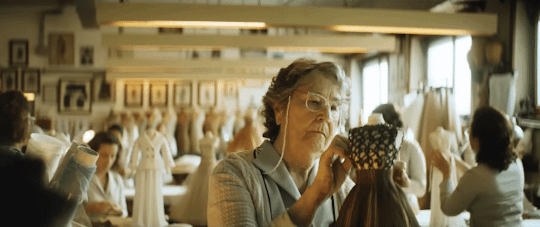
Empowering Consumers for Change
To facilitate slow fashion, it is necessary to comprehend the complexity of ideas and behaviours linked to the fashion industry. Cultural theory, a heuristic analysis that classifies individuals into four ideal-type types based on their worldview (Schwarz & Thompson 1990), can be used to discover strategies that support slow fashion. Fatalist, egalitarian, individualist, and hierarchist are the four theoretical traditions.
At its core, individualist discourses hold that the environment can endure human intervention and support market liberalism. In egalitarian ideologies prioritising social equality, natural resources are perceived as susceptible to human meddling. According to hierarchist debates, institutions should lead in regulating human-environment interactions, and natural systems can withstand human meddling. In fatalist discourses, events are believed to be predetermined by fate, while nature is viewed as unpredictable and beyond human control.
In order to promote slow fashion, lawmakers should take into account the diverse views and understandings regarding accountability among these ethnic groups. To illustrate, individualists might be incentivised by self-improvement and commercial considerations, whereas egalitarians might be inspired by governmental backing of community-based repair and making organisations. High street-making stations backed by the government and organised community groups may entice hierarchists, particularly if environmental advantages are highlighted (West, Saunders & Willet 2021).
It is also critical to be informed of how to properly care for fabrics and garments. Fabric is a valuable resource that may be maintained and improved through servicing to extend its life and improve its quality (West, Saunders & Willet 2021). Repair and servicing kits for investment-type equipment are already being offered by brands such as Patagonia and Finisterre. Efforts to encourage people to wash their clothes less frequently and at cooler temperatures tend to be more persuasive if they are presented as investments, with the economic benefits appealing to individualists, the environmental benefits appealing to egalitarians, and the social norms appealing to hierarchists.
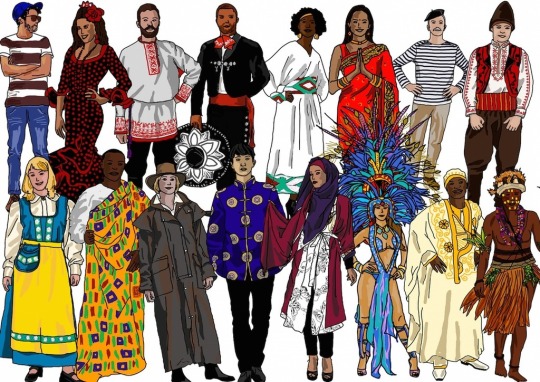
The intersection of slow fashion and digital citizenship
The use of technology, especially digital platforms and tools, has great potential to promote slow fashion, especially within the context of digital citizenship. Collaborative consumption, community building, and information exchange can all flourish on these platforms. For example, according to Zhao et al. (2022), online discussion boards and social networking sites groups can help spread information about sustainable fashion practices. This, in turn, can encourage people of different cultural backgrounds to work together and feel responsible for one another. Consumers may make better, more sustainable shopping decisions with the help of digital tools like virtual try-on technology and AI-powered styling helpers, which can reduce the desire to buy and discard. Also, according to Guo, Sun, and Hugo (2023), blockchain technology can make the fashion supply chain more transparent, which is good for both egalitarians and hierarchists because it lets people know where their clothes came from and how much of an impact they had on the environment. To further advance the cause of slow fashion in today's digital age, it is helpful to highlight the advantages of these technical advancements, such as transparency, ease of use, and community involvement, to appeal to people of many cultural backgrounds.
An additional facet to the promotion of sustainable behaviours within the domain of digital citizenship is the emergence of fashion influencers that identify with the ideas of slow fashion activism. These influential people have a lot of sway over the buying habits and perspectives of their followers when it comes to fashion because of the platforms they have on social media and blogging websites. Their advocacy for ethical production, conscientious consumption, and garment longevity speaks to both the egalitarian and hierarchist ideas of societal duty and institutional regulation, while also promoting individualist values of self-improvement. In line with the broader aims of slow fashion, their stories frequently highlight the emotional connection to clothes, urging fans to treasure and maintain their outfits. These influencers build communities based on sustainable fashion practices through digital platforms, encouraging followers to engage in debate, share information, and take collective action. By engaging with these influencers, digital citizens can do more than just shop; they can actively shape the conversation about sustainable fashion and help create a more educated and ethical online society.
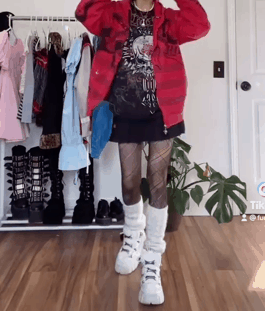
One example of the increasing power of those fighting for slow fashion online is the rise of influential fashion bloggers and YouTubers like Kristen Leo, whose bio highlights her interest in eco-friendly clothing, ethical design, pop culture, and the arts. Famous films by Leo include "How To Shop Sustainably & Quit Fast Fashion!" and "Curating My Sustainable Spring/Summer Capsule Wardrobe," in which she encourages viewers to think about their consumption habits and the ethics of the fashion industry's sourcing practices. She does double duty on her platform by teaching her audience about sustainability and showing them how to put these ideas into effect in their own lives. Leo's writing strikes a chord with a wide range of people because it caters to both the egalitarian and hierarchist ideals of social justice and institutional control, as well as the individualist goals of self-improvement. Kristen Leo and other influencers utilise digital tools and platforms to facilitate the circulation of information, foster community development, and encourage collaborative efforts. As a result, they effectively promote the cause of slow fashion and uphold the value of digital citizenship.
youtube
Conclusion: There’s hope after all?
As we explore how sustainability and fashion may work together, let us not forget that it is our shared duty to create a more fair and environmentally conscious fashion business. We can create a better future where fashion is both a means of self-expression and a catalyst for positive change by adhering to the ideals of slow fashion and making good use of digital citizenship.
References
Blazquez, M, Henninger, CE, Alexander, B & Franquesa, C 2019, ‘Consumers’ Knowledge and Intentions Towards Sustainability: a Spanish Fashion Perspective’, Fashion Practice, vol. 12, no. 1, pp. 34–54.
Caniato, F, Caridi, M, Crippa, L & Moretto, AM 2012, ‘Environmental Sustainability in Fashion Supply chains: an Exploratory Case Based Research’, International Journal of Production Economics, vol. 135, no. 2, pp. 659–670.
Cataldi, C, Dickson, M & Grover, C 2017, ‘Slow fashion: Tailoring a Strategic Approach for Sustainability’, in MA Gardetti & AL Torres (eds), Sustainability in Fashion and Textiles, Greenleaf Publishing, pp. 22–46.
Ertekin, ZO & Atik, D 2015, ‘Sustainable Markets: Motivating Factors, Barriers, and Remedies for Mobilization of Slow Fashion’, Journal of Macromarketing, vol. 35, no. 1, pp. 53–69.
Fletcher, K 2010, ‘Slow Fashion: An Invitation for Systems Change’, Fashion Practice, vol. 2, no. 2, pp. 259–265.
Guo, S, Sun, X & Hugo 2023, ‘Applications of Blockchain Technology in Sustainable Fashion Supply Chains: Operational Transparency and Environmental Efforts’, IEEE Transactions on Engineering Management, vol. 70, no. 4, Institute of Electrical and Electronics Engineers, pp. 1312–1328.
Jackson, T & Marks, N 1999, ‘Consumption, Sustainable Welfare and Human Needs—with Reference to UK Expenditure Patterns between 1954 and 1994’, Ecological Economics, vol. 28, no. 3, pp. 421–441.
Jacobs, K, Petersen, L, Hörisch, J & Battenfeld, D 2018, ‘Green Thinking but Thoughtless buying? an Empirical Extension of the value-attitude-behaviour Hierarchy in Sustainable Clothing’, Journal of Cleaner Production, vol. 203, pp. 1155–1169.
Jung, S & Jin, B 2014, ‘A Theoretical Investigation of Slow fashion: Sustainable Future of the Apparel Industry’, International Journal of Consumer Studies, vol. 38, no. 5, pp. 510–519.
Legere, A & Kang, J 2020, ‘The Role of self-concept in Shaping Sustainable consumption: a Model of Slow Fashion’, Journal of Cleaner Production, vol. 258.
Max-Neef, MA, Elizalde, A & Hopenhayn, M 1991, Human Scale Development, The Apex Press, New York, NY USA.
Niinimäki, K & Hassi, L 2011, ‘Emerging Design Strategies in Sustainable Production and Consumption of Textiles and Clothing’, Journal of Cleaner Production, vol. 19, no. 16, pp. 1876–1883.
Scaraboto, D & Fischer, E 2013, ‘Frustrated Fatshionistas: an Institutional Theory Perspective on Consumer Quests for Greater Choice in Mainstream Markets’, Journal of Consumer Research, vol. 39, no. 6, Oxford University Press, pp. 1234–1257.
Schwarz, M & Thompson, M 1990, Divided We Stand, University of Pennsylvania Press.
Stürmer, S, Simon, B, Loewy, M & Jörger, H 2003, ‘The Dual-Pathway Model of Social Movement Participation: the Case of the Fat Acceptance Movement’, Social Psychology Quarterly, vol. 66, no. 1, pp. 71–82.
Turker, D & Altuntas, C 2014, ‘Sustainable Supply Chain Management in the Fast Fashion industry: an Analysis of Corporate Reports’, European Management Journal, vol. 32, no. 5, pp. 837–849.
Vesterinen, E & Syrjälä, H 2022, ‘Sustainable anti-consumption of clothing: a Systematic Literature Review’, Cleaner and Responsible Consumption, vol. 5.
West, J, Saunders, C & Willet, J 2021, ‘A Bottom up Approach to Slowing fashion: Tailored Solutions for Consumers’, Journal of Cleaner Production, vol. 296.
Wildavsky, A 1987, ‘Choosing Preferences by Constructing Institutions: a Cultural Theory of Preference Formation’, American Political Science Review, vol. 81, no. 1, Cambridge University Press, pp. 3–21.Zhao, L, Lee, SH, Li, M & Sun, P 2022, ‘The Use of Social Media to Promote Sustainable Fashion and Benefit Communications: a Data-Mining Approach’, Sustainability, vol. 14, no. 3, Multidisciplinary Digital Publishing Institute, pp. 1178–1178.
#slow fashion#mda20009#digital communities#sustainability#fashion#fashionwithpurpose#sustainablestyle#week 6#Youtube
0 notes
Text
Dallas Willard was a renowned philosopher, professor, and author who wrote extensively on Christian spiritual formation. He was known for his insightful and practical teachings on how to live a life of discipleship and grace. His books, such as ‘The Divine Conspiracy,’ ‘The Spirit of the Disciplines,’ and ‘Hearing God,’ have influenced many Christians around the world.
#dallaswillardquotes#ethicalelegance#sustainablestyle#greenfashion#fashionwithpurpose#fashionforward#labgrowndiamonds#organiccottonbamboo#asschercutdiamond#bespokedesign#quotes#meditation#spirituality#inspirationalquotes#successquotes#lifequotes
0 notes
Text
Fashion with a Conscience: Embrace Eco-Friendly Clothing with Print on Demand
In a world where sustainability is becoming increasingly crucial, your wardrobe can make a positive impact on the environment. Eco-friendly clothing is not just a trend; it's a conscious choice that supports a healthier planet. If you're looking to make a stylish statement while minimizing your ecological footprint, consider the magic combination of eco-friendly materials and print-on-demand (POD) services.
The Rise of Eco-Friendly Fashion
Eco-friendly fashion is more than just a passing fad; it's a commitment to a greener future. With concerns about environmental issues on the rise, consumers are seeking sustainable alternatives in every aspect of their lives, including clothing. From organic cotton to recycled polyester, the market is filled with eco-conscious materials that can elevate your wardrobe while staying kind to the Earth.
Why Print on Demand?
Print on demand is a game-changer for the fashion industry. This innovative approach allows you to create unique, customized designs without the need for excessive inventory. By printing only what is ordered, you reduce waste and contribute to a more sustainable fashion cycle. Print on demand not only empowers small businesses but also minimizes overproduction, making it an eco-friendly choice for both creators and consumers.
Choosing Eco-Friendly Materials
When combining eco-friendly materials with print on demand, you amplify your positive impact on the environment. Opt for clothing made from organic cotton, recycled polyester, or other sustainable fabrics. These materials not only feel great against your skin but also align with your commitment to a greener lifestyle. Make sure to highlight the eco-friendly aspects of your products to attract environmentally-conscious consumers.
Showcasing Unique Designs
Print on demand allows for endless creativity. Develop eye-catching, exclusive designs that resonate with your target audience. Whether it's a bold statement, a minimalist illustration, or a nature-inspired pattern, the possibilities are limitless. Your customers will appreciate the uniqueness of your designs and the fact that they are contributing to a more sustainable fashion industry.
Transparency Builds Trust
In the age of information, consumers value transparency. Be open about your commitment to eco-friendly practices and the materials used in your clothing. Educate your audience on the positive impact of print on demand in reducing waste and promoting sustainability. Building trust with your customers fosters brand loyalty, which can lead to increased sales and a positive reputation within the eco-conscious community.
Eco-friendly clothing with print on demand is a winning combination for both fashion enthusiasts and the planet. By choosing sustainable materials, embracing unique designs, and leveraging the power of print on demand, you can create a successful business that aligns with the growing demand for environmentally conscious choices. Fashion with a conscience is not just a trend – it's a movement that you can be a part of, making a difference one stylish piece at a time.
#ecofashion#sustainablestyle#print on demand#greenwardrobe#fashionwithpurpose#ethical fashion#customdesigns#consciousconsumer#ecofriendlymaterials#fashionrevolution#Wear The Change#unique prints#sustainableliving#zerowastefashion#fashionforchange#Earth Friendly Clothing#Small Business Sustainability#Conscious Closet#customfashion#Green Biz Fashion
0 notes
Text
Dockers Stylish High-Quality Casual Trouser Pants For Men At Unmatched Prices
In the quest for an effortlessly stylish and versatile wardrobe, money remains a major determinant. But you don’t always have to empty your purse to achieve optimal class. There are several brands that allow you to express your fashion taste without breaking the bank. Among them, Dockers emerges as a beacon of both quality and affordability. Their range of best men’s casual pants doesn’t just elevate your everyday style; it does so without burning a hole in your pocket.
The Dockers Legacy

Affordable Luxury

Sustainability In Style
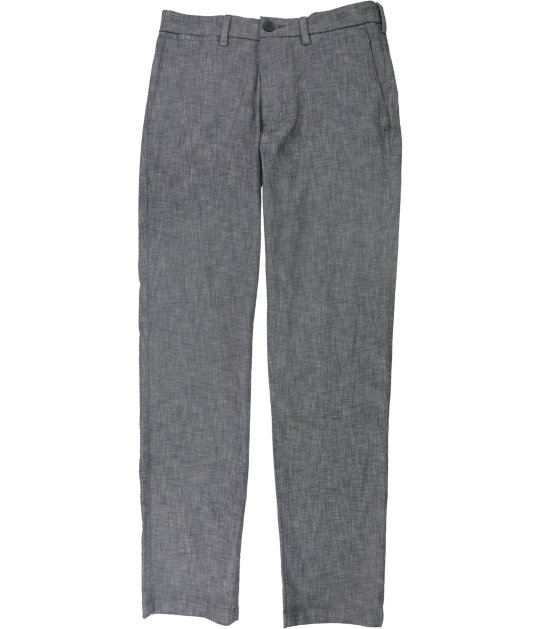
An Array Of Styles For Every Occasion
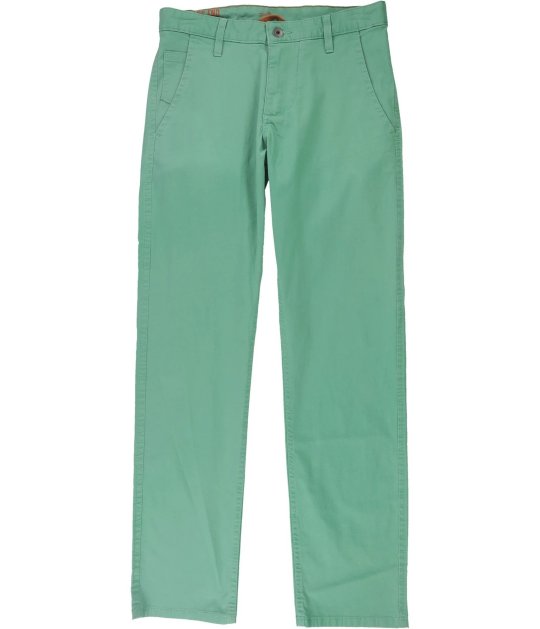
Perks Of Men’s Casual Pants
Comfort And Convenience
The fundamental allure of men’s casual pants lies in their comfort and convenience. After a demanding day at work, the prospect of donning formal attire can feel cumbersome. That’s why opting for casual trousers becomes a practical choice, allowing you to transition from professional settings to informal after-work gatherings seamlessly with no wardrobe change. This not only enhances comfort but also reduces stress, fostering a more relaxed and productive environment.
The Capacity For Expression
While business attire often adheres to a more standardized and limited wardrobe, casual dressing provides a canvas for individual expression. Men’s casual pants allow for diverse styles that align more closely with personal preferences, reflecting one’s unique personality. This freedom of expression contributes to a more authentic and enjoyable work atmosphere, where employees can showcase their individuality through their chosen looks and styles.
Enhanced Toughness
Durability is a notable advantage of casual trousers. Designed and stitched to resist ripping, these pants are crafted with longevity in mind. The added layers and sturdy construction contribute to the pants’ robustness, ensuring they withstand the wear and tear of regular use. This durability is especially beneficial for those seeking long-lasting, reliable clothing that remains resilient in various settings.
Comfortable And Versatile
Men’s casual pants are synonymous with comfort. Their lightweight fabrics and comfortable designs make them ideal for quick trips to public places like grocery stores or restaurants. Beyond convenience, these trousers help maintain a polished appearance while offering a relaxed fit, allowing for ease of movement without compromising style. They are versatile enough to be worn in various settings, whether at work, home, or outdoor gatherings. With casual trouser pants, you can boast of having a well-rounded wardrobe.
Wide Variety
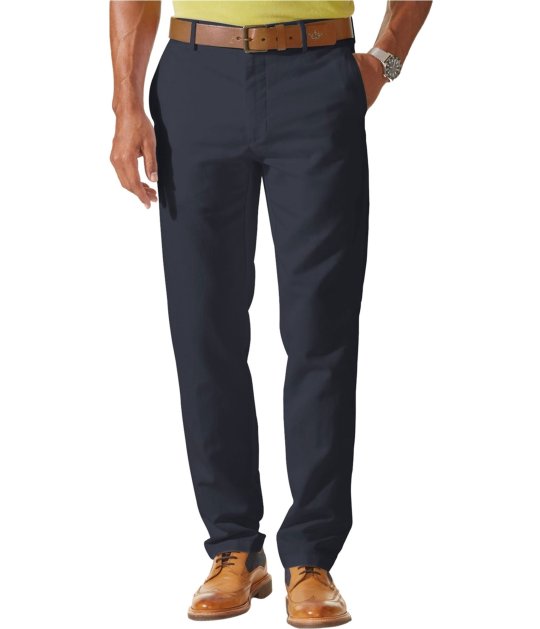
Conclusion
Dockers stylish high-quality casual trouser pants for men offer a harmonious blend of timeless elegance, craftsmanship, and affordability. Embrace the Dockers legacy and redefine your casual wardrobe with trousers that effortlessly combine sophistication and comfort. Elevate your style game without the hefty price tag – because Dockers understands that fashion should be accessible to all.
#DockersFashion#AffordableStyle#CasualChic#QualityCraftsmanship#SustainableFashion#VersatileWardrobe#ComfortAndStyle#FashionForEveryOccasion#ExpressYourself#DurableClothing#StylishComfort#WardrobeEssentials#FashionWithPurpose#MensStyle#BudgetFriendlyFashion
0 notes
Text
Fashion Goals.

Walking into the week like a sustainable fashion icon. 💁♂️🌿 Who said saving the planet can't be fabulous? #EcoChicGoals
#SustainableFashion#EthicalClothing#SlowFashion#ConsciousFashion#EcoFriendlyStyle#GreenWardrobe#FashionRevolution#FairTradeFashion#CircularFashion#EthicalStyle#SustainableStyle#FashionWithPurpose#MindfulFashion#LowImpactFashion
0 notes
Text



This season of love, don't stress about finding the perfect gift. 💝 Embrace sustainability with Caz Studi🌿✨
Discover unique treasures from their collection of sustainable cashmere scrafs and sweaters. 🧣❤️ Plus, enjoy an exclusive 20% discount – our special treat for you! 🎁✨ Postage is also free. ✉️
USE DISCOUNT CODE: SFLTFeb14 - www.cazstudio.co
Why settle for the ordinary when you can gift something extraordinary? 💑 Tap into the love and warmth of sustainable fashion this Valentine's Day. 🌟 Hurry, the offer won't last forever! 🏃♀️🏃♂️. Also suitable for any men with style!
🌿💖
#ValentinesDay#SustainableFashion#CozyLove#EcoFriendlyGifts#ValentineSpecial#FashionWithPurpose#discount#offer#discountcode
1 note
·
View note
Text
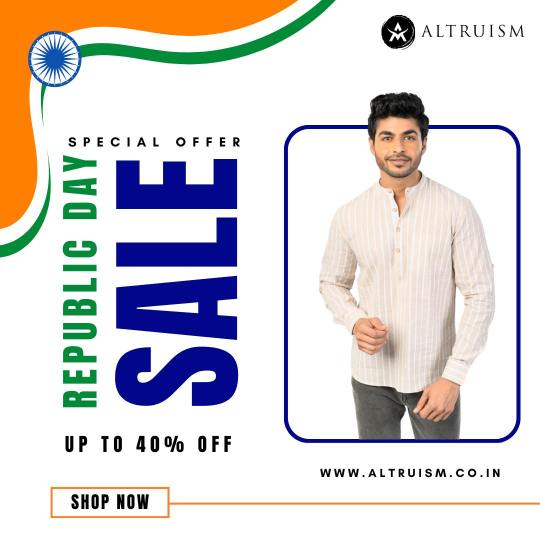
🕊️ Embrace the symphony of tradition and trend this Republic Day!🎉 Altruismofficial presents its Men's Shurtas collection – a harmonious blend of classic charm and contemporary allure. 🌟 Redefine your wardrobe and make a statement that echoes the essence of our nation. Dive into the latest fashion trends and let your outfit tell a story of elegance and altruistic style. 💫🎉
𝐆𝐞𝐭 𝐲𝐨𝐮𝐫𝐬 𝐭𝐨𝐝𝐚𝐲! 🛒
https://altruism.co.in/product-category/men/men-topwear/shurta/
#altruism#clothingbrand#marketing#fashiondaily#AltruismFashion#RepublicDayVibes#stylegame#Fashionwithpurpose#Fashionjourney#culturalchic#Altruismstyle#LatestFashionTrends#ModernMensWardrobe#AltruismStyleJourney#TrendyEssentials#Shurtas#Altruism
0 notes
Text

"Saluting the spirit of unity and diversity on this Republic Day! 🇮🇳✨
Embrace the colors of patriotism with Tru Uniforms. Explore our collection that reflects the essence of a vibrant nation. 🎊 Visit www.truuniforms.in to celebrate the Republic in style.
ContactUs: +91-9959374678 📞 [email protected] 📧"
#HappyRepublicDay#TruUniforms#PatrioticFashion#UnityInStyle#NationWithTru#RepublicDayCelebration#DressWithPride#FashionWithPurpose#ShopTru#TricolorTrend#FashionForAll#SaluteToTheNation#RepublicDayStyle#WearYourPatriotism#JaiHind#ShopNow
0 notes
Text

In a world that often glorifies strength and perfection, we invite you to celebrate the beauty of imperfection and the profound strength found in vulnerability. Our embracing weakness unisex crewneck sweatshirt is not just a piece of clothing; it's a symbol, a wearable manifesto encouraging you to acknowledge and embrace every facet of your being. Crafted with comfort in mind, this crewneck sweatshirt isn't just about the cozy fabric against your skin; it's about the warmth it brings to your heart. Join us in this movement of self-love and empowerment!
🛍️ https://bit.ly/3UbLV5s
.
.
.
.
#embraceimperfection#strengthinvulnerability#wearablemanifesto#celebrateyourbeing#imperfectlyperfect#selflovejourney#embracingweakness#crewneckcomfort#heartwarmingfashion#empoweryourself#beyourownkind#loveyourflaws#comfortableconfidence#vulnerabilityisstrength#fashionwithpurpose#unveilyourtrueself#innerstrength#imperfectbeauty#loveyourjourney#authenticself
0 notes
Text
🌿 Embrace Eco-Chic Fashion! 🌎✨ Dive into the world of sustainable clothing for women, where style meets conscience. Discover curated collections that blend fashion-forward designs with eco-friendly practices. From organic fabrics to ethical production, our #SustainableClothing line is a statement of both elegance and responsibility. Join the fashion revolution—because being mindful never looked this good! 🌿💃
#clothing#ecofriendly#sustainable#fashion#ethical fashion#EcoFashion#FashionWithPurpose#SustainableStyle
1 note
·
View note
Text
Elevate your comfort game with Vedco's Bamboo T-Shirt.

#Vedco#SoftStyleUpgrade#VedcoBambooTee#BambooTeeLuxury#EcoChicComfort#VedcoFashion#BambooFashion#FashionWithPurpose#OrderNowFashion
0 notes
Photo
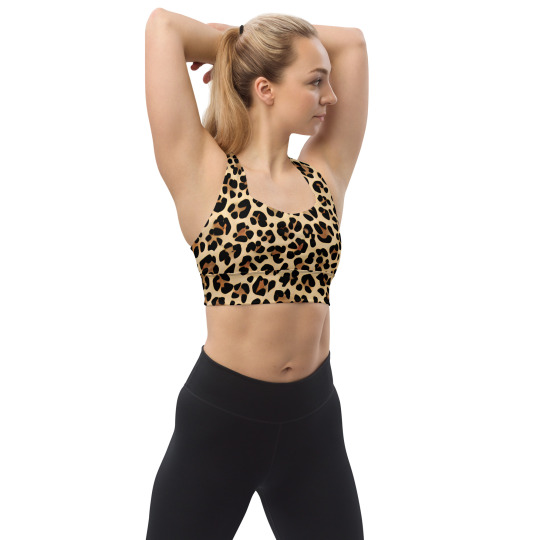
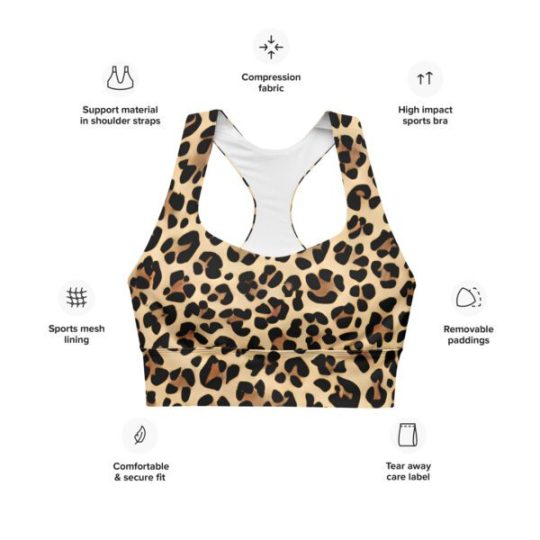


(via Brown Leopard Longline sports bra)
🔥 **Unleash Confidence in Every Move - Brown Leopard Longline Sports Bra!**
Take your workouts to the next level with our Brown Leopard Longline Sports Bra, designed for fierce performance and unbeatable style.
🏋️♀️ **Key Features:**
- **Compression Fabric:** Engineered with 78% polyester and 22% spandex, providing optimal compression for excellent support during high-intensity activities.
- **Sports Mesh Lining:** 92% polyester and 8% spandex sports mesh lining for enhanced breathability and comfort.
- **Non-See-Through:** Enjoy confidence and coverage with non-see-through fabric, perfect for various workouts.
- **Removable Padding:** Customize your fit and support with openings for removable padding, included for your convenience.
- **Double-Layered Front:** Ensures maximum support and durability, making it ideal for running, jumping, and weightlifting.
- **Longline Silhouette:** A trendy longline design that doubles as stylish streetwear on sunny days.
🌈 **Fashion with a Purpose:**
- **Fabric Weight:** Compression fabric at 8.25 oz/yd² (280 g/m²) and sports mesh lining at 4.42 oz/yd² (150 g/m²) strikes the perfect balance between support and breathability.
- **Traceability:** Responsibly sourced components from Spain, China, Germany, Taiwan, and Turkey ensure a product you can trust.
- **Sustainable Practices:** Crafted on-demand to reduce overproduction, contributing to a more sustainable fashion industry.
🌟 **Confidence Meets Style:**
Whether you're hitting the gym or owning the streets, the Brown Leopard Longline Sports Bra empowers your every move. Order now and experience the perfect fusion of fashion, function, and confidence!
[Order Now] [Link to the Product]
#highperformancefashion#high fashion#highfashion#unleash the beast#unleashthebeast#fashionwithpurpose#fashion with purpose#on demand production#sustainablestyle#sustainable style#confidenceinmotion#confidence in motion#brownleopard#brown leopard#fitnessfashion#fitness fashion#workoutessentials#workout essentials#longlinesportsbra#longline sports bra#longline#sports bra#sportsbra#bra
0 notes
Text
#SafeAndStylish#ChicSafety#KeychainEmpowerment#SecureFashion#FashionWithPurpose#SafetyEssentials#StylishProtection#EmpowerYourStyle#TrendyKeychains#EverydaySafety#ChicDefense#SecureAccessories#FashionMeetsFunction#KeychainLove#SafetyStatement
0 notes
Text
Men & Women's Sustainable Fashion Luxury Brands You Should Know in 2023!
Looking Cool is a moral self-responsibility, and in 2023, you can enjoy it more by making sustainable shopping decisions! Choosing Sustainable brands to shop for your ideal look is now possible globally with these famous industry icons and their exclusive collections. You can bet you didn't know about all 12 of them!
#SustainableFashion#EcoFriendlyStyle#EthicalShopping#SustainableBrands#EcoFashion#SustainableChoices#EcoChic#FashionWithPurpose
0 notes